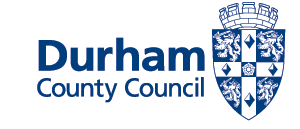Alcohol - types of drinking
This page gives information about units and provides advice about low-risk/higher-risk drinking and binge drinking.
If you are concerned about your own drinking or worried about a family member or friend, help and support is available through County Durham drug and alcohol recovery services.
Units
We mention 'units' on this page a lot, so here is a re-cap of what a unit is.

One unit of alcohol is 8mg (10ml) of pure alcohol. The number of units in an alcoholic drink depends on the type of drink, how strong it is and the size of the measure.
- A pint of regular beer/lager/cider contains two units.
- A bottle of alcopop or can of lager will contain one and a half units.
- A 175ml glass of wine contains two units.
- A single measure of sprits will contain one unit.
- A full bottle of wine contains on average nine units.
Low-risk drinking
Lower-risk drinking can be described as drinking in a way that is unlikely to cause yourself or others significant risk of harm. The Government advises that:
- Adults should not regularly drink more than 14 units of alcohol a week.
- The Chief Medical Officers for the UK currently recommend that pregnant women, or those planning to become pregnant, avoid drinking any alcohol at all to keep risks to a minimum. Long-term health risks for the baby are greater the more alcohol you drink.
To keep your risk of alcohol-related harm low, the NHS recommends:
- If you drink as much as 14 units a week, it's best to spread this evenly over three or more days.
- If you're trying to reduce the amount of alcohol you drink, it's a good idea to have several alcohol-free days each week.
Regular or frequent drinking means drinking alcohol most weeks. The risk to your health is increased by drinking any amount of alcohol on a regular basis. If you drink less than 14 units a week, this is considered low-risk drinking. It's called 'low risk' rather than 'safe' because there is no safe drinking level.
Higher-risk drinking
High-risk drinking can be described as drinking at levels that bring about significant harm to your physical and mental health and at levels that may be causing substantial harm to others. Examples include; liver damage, cirrhosis, dependence on alcohol and substantial stress or aggression in the family.
Women who drink heavily during pregnancy put their babies at risk of development of foetal alcohol spectrum disorder. These disorders lead to lifelong intellectual and behavioural problems for their child.
Binge drinking
Binge drinking is essentially drinking too much alcohol over a short period of time. Typically, this type of drinking leads to drunkenness. Alcohol tolerance can vary from person to person and the speed of drinking in a session can also alter alcohol's effects. Drinking too much, too quickly on a single occasion can increase your risk of:
- alcohol poisoning
- accidents resulting in injury, serious injury or death
- altercations, assault or criminal damage
- misjudging risky situations or engaging in risk taking behaviour
- lowering of inhibitions or losing self-control
- unprotected sex or contracting a sexually transmitted infection and, for women, are more likely to have an unplanned pregnancy
- Telephone 03000 266 666

 Share this page on Facebook
Share this page on Facebook
 Share this page on Twitter
Share this page on Twitter
 Print this page
Print this page





